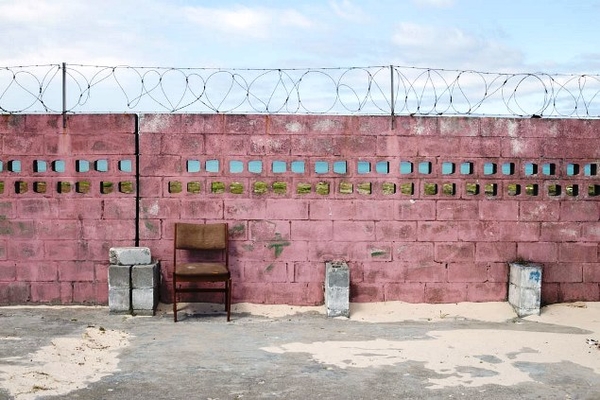The great escape: Young women of the Flats in the clutches of gangs

“Every time they go murder somebody, the guns come to me, I clean it and I load it again,” says 21-year-old Shireen. “Yoh! … If you’re on drugs, you catch on to all the stuff, man. You’re not the same.”
The Cape Flats has been the scene of gang wars and deadly rivalries for decades. The relocation of those classified as coloured and black from the city centre to the Cape Flats and neighbouring townships during apartheid cultivated conditions in which the street gangs of the early 1980s thrived. A lack of services and jobs, as well the disruption of social structures, only made things worse. Hanover Park and Manenberg are reputedly amongst the most violent areas. In 2013/2014, 1,351 people were killed on the Cape Flats.
“Most of them [gang members] come from broken homes,” explains Charmaine du Bruin, an outreach worker in Hanover Park. “They come from a home where there’s no mother, there’s no father and they are living with the grandmother, the aunt.”
Even though they did not consider themselves to be actual members of gangs, Shireen and her 26-year-old friend, Robyn, were socialised into a world of gangs, exposed to the same lifestyle, the same rules, and the same hierarchies as their male peers.
As females in a male dominated world, girls like Shireen and Robyn are easy targets.
“Their ‘brothers’ [other gang members] will kill us, because they think we are gevaar [a danger],” says Shireen.
“There were guys chasing me. They’re all waiting for me to sleep. So I would not allow myself to sleep, and I would use drugs to stay awake,” says Robyn.
“It’s very hard for someone living on the street not using anything [drugs],” she says. “It came to a point where I was using, every day, to get by, and this [drugs] is just part of every day now.”
“It’s almost like … smoking becomes a mode of survival,” she says. “When you are using, it’s worse because then they [the gangs] have something to manipulate you with.”
The two friends are sitting on the ground next to an empty pool at the rehabilitation centre, Camp Joy – a six-week, in-house rehab program – tucked away in the dunes of Strandfontein .
The real trial starts when the program is over and the girls have to go back home. Surrounded by family and friends deeply anchored in the drug world they are trying to escape, many fall right back into their addiction. It happened to Robyn.
“They do the program and they don’t even want to go back home,” says De Bruin. “But at the end of the day, they can’t always stay there; they need to come back to Hanover Park.”
Shireen fell back into old patterns after her first rehab, when she lost her job as an operator in a factory in Ottery.
Robyn calls herself a rehab-junkie, because she has done this circuit many times. Unresolved issues with her relatives have kept pushing her back on the streets. “There were a lot of things that didn’t need to happen between me and my family, and a lot of things that I needed to take responsibility for. It’s sad, but now I’m in a different space … I’m clean. I can sleep. You have no idea, just to be able to fall asleep and not worry about who is around you, if someone comes in, who is coming in … It was a relief.”
Robyn and her mother have reconnected now that she’s clean. Once out of rehab, she is set to get her own space.
Shireen however is still entangled. “My baby-daddy is a gangster,” she says. The father of her child and her boyfriend of eight years is also the son of a gang leader. This was why Shireen took care of the weapons.
“We always used to plan and I used to sit with them [the gang], ‘Okay, do this, do that.’”
Rival gangs used her to get to her boyfriend.
“You must see … the people in that environment, they don’t stand with you. They know stuff about you; then, they go tell the other gangsters, ‘Look, here, you see, she who talks there? It’s she who keeps the guns, she sells the drugs for them, she knows everything, hijack her, she’s gonna tell’. But I never told nobody.”
Shireen says she has been kidnapped many times, held at gunpoint and threatened with rape.
Shireen talks about these experiences matter-of-factly, but her facial expression betrays the trauma she suffered. “They hit me, I had blue eyes … broke my nose… I never told. Rather kill me, I’ll never tell.”
Things changed when she fell pregnant at 17. Initially, the ultrasound suggested that she was having a boy, a nightmare she says – “Because the daddy is a gangster and the grandfather is a leader. So obviously my child will also be one of them.”
But it was a daughter and everything changed. Shireen decided to clean up her act. “I don’t want to give my child the life I had. She’s too pretty, she’s too precious to be hurt.”
“Now that I’m clean, I see that I was used all the time and I didn’t see it,” she says.
Shireen is now three-months clean and Robyn fought her addiction and made peace with her family.

Young women leave Camp Joy to brave the outside world once again. Photo by Juliete Garms.
Support independent journalism
Donate using Payfast

Don't miss out on the latest news
We respect your privacy, and promise we won't spam you.

This article is licensed under a Creative Commons Attribution-NoDerivatives 4.0 International License.
